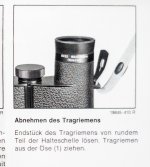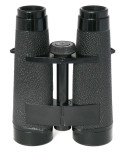tenex
reality-based
Later Leicas have lighter materials, sleeker housings, and better coatings and glass, but unchanged functions, length, eye relief, field correction, and field of view.
That does seem to have been true for a long time, but field correction finally changed in 2012 with the Trinovid 42, which has a distinctly flatter field. This just wasn't publicized, which seems a bit odd. I think it's a real improvement.





